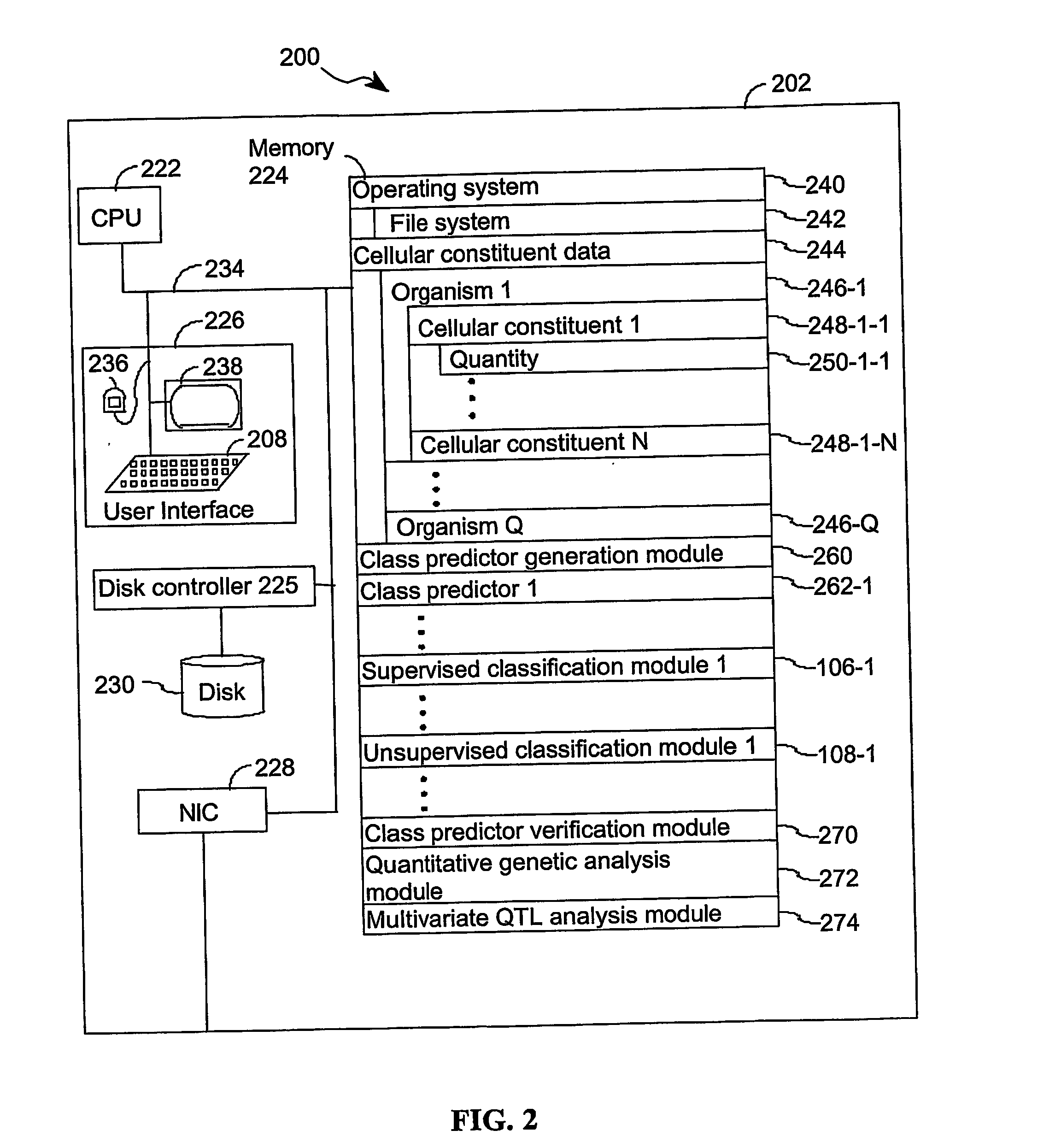Computer systems and methods for subdividing a complex disease into component diseases
a computer system and disease technology, applied in the field of computer systems and methods for subdividing complex traits into component diseases, can solve the problems of inability to obtain, serious or even lethal side effects, and inability to fully understand the information on the biological cascade associated with a disease, so as to improve the accuracy and reliability of results, reduce the heterogeneity, and increase the frequency of disease-causing alleles
- Summary
- Abstract
- Description
- Claims
- Application Information
AI Technical Summary
Benefits of technology
Problems solved by technology
Method used
Image
Examples
Embodiment Construction
[0045] The present invention provides computer systems, computer program products, and methods for associating a gene with a trait exhibited by one or more organisms in a plurality of organisms of a single species. Exemplary organisms include, but are not limited to, plants and animals. In specific embodiments, exemplary organisms include, but are not limited to, plants such as corn, beans, rice, tobacco, potatoes, tomatoes, cucumbers, fruit trees, cabbage, lettuce, and wheat. In specific embodiments, exemplary organisms include, but are not limited to animals such as mammals, primates, humans, mice, rats, dogs, cats, chickens, horses, cows, pigs, and monkeys. In yet other specific embodiments, organisms include, but are not limited to, Drosophila, yeast, viruses, and C. elegans. In some instances, the gene is associated with the trait by identifying a biological pathway in which the gene product participates. In some embodiments of the present invention, the trait of interest is a ...
PUM
| Property | Measurement | Unit |
|---|---|---|
| hybridization time | aaaaa | aaaaa |
| volumes | aaaaa | aaaaa |
| volumes | aaaaa | aaaaa |
Abstract
Description
Claims
Application Information
 Login to View More
Login to View More - R&D
- Intellectual Property
- Life Sciences
- Materials
- Tech Scout
- Unparalleled Data Quality
- Higher Quality Content
- 60% Fewer Hallucinations
Browse by: Latest US Patents, China's latest patents, Technical Efficacy Thesaurus, Application Domain, Technology Topic, Popular Technical Reports.
© 2025 PatSnap. All rights reserved.Legal|Privacy policy|Modern Slavery Act Transparency Statement|Sitemap|About US| Contact US: help@patsnap.com



